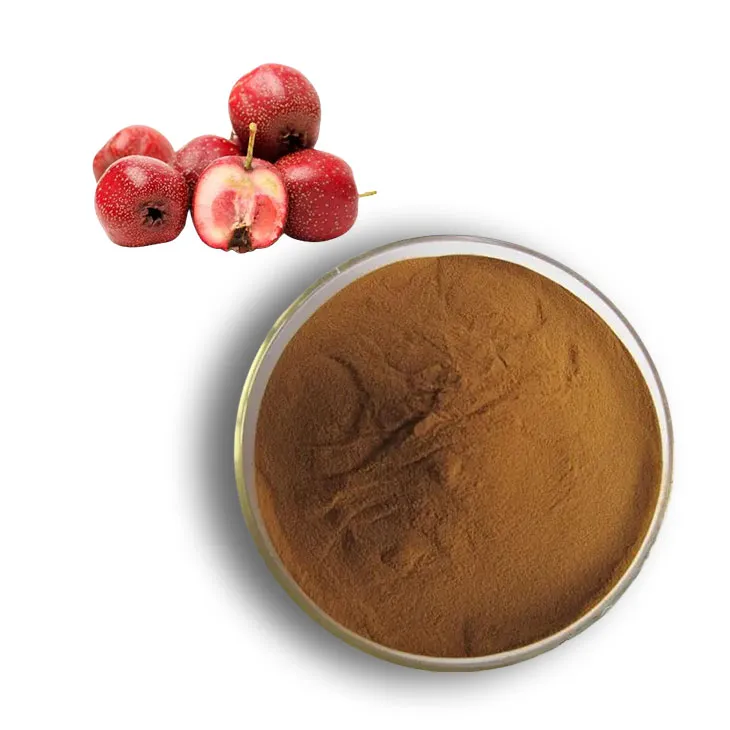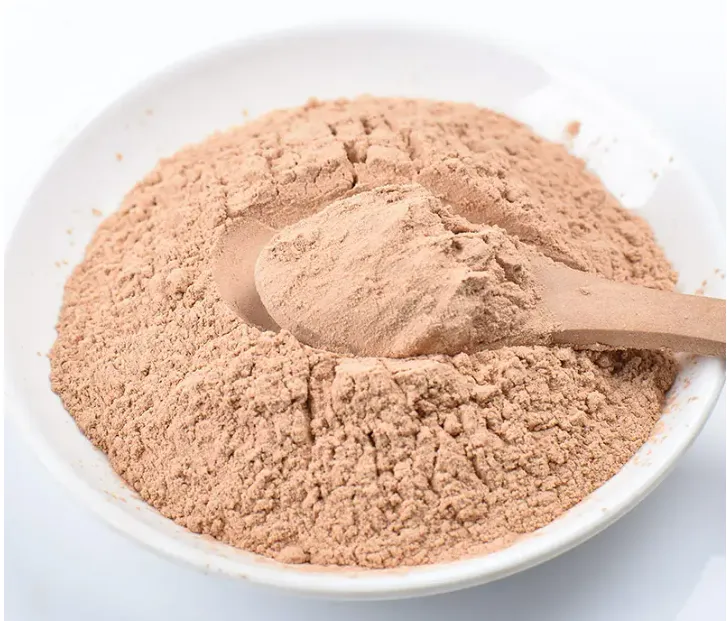- 0086-571-85302990
- sales@greenskybio.com
Hawthorn Extract: Uses, Advantages and Manufacturing Processes
2024-11-12

I. Introduction
Hawthorn Extract has emerged as a substance of great interest in recent years. It is derived from the hawthorn plant, which has a long history of use in traditional medicine. The extract contains a variety of bioactive compounds that contribute to its diverse properties. This article will explore the uses, advantages, and manufacturing processes of Hawthorn Extract in detail.

II. Uses of Hawthorn Extract
1. Medical Uses
Cardiovascular Health: One of the most significant medical uses of hawthorn extract is in the area of cardiovascular health. It has been shown to play a beneficial role in regulating blood pressure. The extract can help relax blood vessels, which in turn can lead to a reduction in blood pressure levels. This is especially important for individuals with hypertension.
In addition to blood pressure regulation, hawthorn extract is also beneficial for improving heart function. It can enhance the contractility of the heart muscle, which means that the heart is able to pump blood more effectively. This can be helpful for patients with heart failure or those with weakened heart muscles.
2. Food and Beverage Industry
Natural Flavor Enhancer: In the food and beverage industry, hawthorn extract serves as a natural flavor enhancer. It imparts a unique, pleasant flavor to products. For example, in the production of fruit juices, it can add a tangy and slightly sweet flavor that is characteristic of hawthorn fruits.
Preservative: Hawthorn extract also has preservative properties. It can help prevent the growth of spoilage microorganisms in food and beverages. This is due to the presence of certain compounds in the extract that have antimicrobial activity. By using hawthorn extract as a preservative, food and beverage manufacturers can reduce their reliance on synthetic preservatives, which may be less desirable to consumers.

III. Advantages of Hawthorn Extract
1. Natural Origin
One of the major advantages of hawthorn extract is that it is a natural product. It is sourced from the hawthorn plant, which is a natural and renewable resource. Compared to synthetic substances, natural products are often perceived as being safer and more in line with consumers' preferences for "natural" ingredients.
2. Fewer Side Effects
Because it is a natural product, hawthorn extract generally has fewer side effects compared to some synthetic drugs. However, it is important to note that it is still a bioactive substance and should be used with caution, especially in individuals with certain medical conditions or those taking other medications.
3. Antioxidant Properties
Hawthorn extract has antioxidant properties. Antioxidants are substances that can combat free radicals in the body. Free radicals are unstable molecules that can cause damage to cells, leading to various health problems such as aging, cancer, and cardiovascular diseases. By neutralizing free radicals, the antioxidant in hawthorn extract can help protect the body's cells and tissues from damage, thus contributing to overall health.

IV. Manufacturing Processes of Hawthorn Extract
1. Raw Material Selection
The first step in the manufacturing process of hawthorn extract is raw material selection. High - quality hawthorn fruits are chosen as the starting material. The quality of the fruits can affect the quality of the final extract. Factors such as the ripeness of the fruits, their origin, and whether they are free from pesticides and other contaminants are important considerations.
2. Extraction
Solvent Extraction: After the selection of raw materials, the next step is extraction. One common method is solvent extraction. Ethanol or water can be used as solvents. Ethanol is often preferred because it can extract a wide range of bioactive compounds from the hawthorn fruits. The hawthorn fruits are typically crushed or ground into a fine powder before being mixed with the solvent. This allows for better contact between the fruit material and the solvent, facilitating the extraction process.
The extraction process usually takes place at a certain temperature and for a specific period of time. For example, when using ethanol as a solvent, the extraction may be carried out at a temperature of around 50 - 70°C for several hours. This helps to ensure that the desired bioactive compounds are effectively extracted from the hawthorn fruits.
3. Purification
Once the extraction is complete, the resulting solution contains not only the desired hawthorn extract but also impurities such as plant debris, pigments, and other unwanted substances. Therefore, purification is necessary. There are several methods for purification, such as filtration and centrifugation. Filtration can be used to remove larger particles such as plant debris, while centrifugation can help separate smaller particles and substances based on their density differences.
4. Concentration
After purification, the next step is concentration. The goal of concentration is to obtain a more concentrated form of the hawthorn extract. This can be achieved through methods such as evaporation. By removing the solvent (either ethanol or water), the concentration of the bioactive compounds in the extract can be increased. The final hawthorn extract can then be packaged and stored for further use in various applications such as in the medical, food, or cosmetic industries.
V. Conclusion
Hawthorn extract has a wide range of uses in both the medical and food and beverage industries. Its advantages, including its natural origin, fewer side effects, and antioxidant properties, make it an attractive option for various applications. The manufacturing process, which involves raw material selection, extraction, purification, and concentration, is carefully designed to ensure the production of high - quality hawthorn extract. As research on hawthorn extract continues, it is likely that even more uses and benefits will be discovered in the future.
FAQ:
What are the main uses of hawthorn extract in the medical field?
Hawthorn extract is mainly used for cardiovascular health in the medical field. It can help regulate blood pressure and improve heart function.
How does hawthorn extract act as a preservative in the food and beverage industry?
The exact mechanism by which hawthorn extract acts as a preservative in the food and beverage industry may be related to its natural chemical composition. Some components in it may inhibit the growth of microorganisms, thus playing a role in preservation.
What makes hawthorn extract relatively safe compared to synthetic substances?
Hawthorn extract is a natural product. Since it is derived from nature, it generally has a more complex and gentle composition compared to some synthetic substances. It is less likely to cause severe side effects and is more in line with the body's natural metabolic processes.
Can you briefly describe the extraction solvents used in the manufacturing process of hawthorn extract?
In the manufacturing process of hawthorn extract, common extraction solvents are ethanol and water. These solvents can effectively extract the active components from hawthorn fruits.
What are the key steps in the purification process of hawthorn extract?
The key steps in the purification process of hawthorn extract may include filtration to remove large - particle impurities, and sometimes chromatographic separation techniques may be used to further purify and separate different components to ensure the purity of the final extract.
Related literature
- The Beneficial Effects of Hawthorn Extract on Cardiovascular Health"
- "Hawthorn Extract in the Food Industry: Properties and Applications"
- "Manufacturing Techniques and Quality Control of Hawthorn Extract"
- ▶ Hesperidin
- ▶ citrus bioflavonoids
- ▶ plant extract
- ▶ lycopene
- ▶ Diosmin
- ▶ Grape seed extract
- ▶ Sea buckthorn Juice Powder
- ▶ Beetroot powder
- ▶ Hops Extract
- ▶ Artichoke Extract
- ▶ Reishi mushroom extract
- ▶ Astaxanthin
- ▶ Green Tea Extract
- ▶ Curcumin Extract
- ▶ Horse Chestnut Extract
- ▶ Other Problems
- ▶ Boswellia Serrata Extract
- ▶ Resveratrol Extract
- ▶ Marigold Extract
- ▶ Grape Leaf Extract
- ▶ blog3
- ▶ blog4
- ▶ blog5
-
Organic Tongkat Ali extract powder factory.
2024-11-12
-
How to make powder with ashwagandha extract.
2024-11-12
-
Rosehip extract manufacturers from China.
2024-11-12
-
The best cat's claw extract in nature.
2024-11-12
-
Chinese Dandelion Leaf Extract Suppliers.
2024-11-12
-
Scutellaria Extract
2024-11-12
-
Bamboo Leaf extract
2024-11-12
-
Moringa powder
2024-11-12
-
Golden Seal Extract
2024-11-12
-
Hawthorn powder
2024-11-12
-
Soy Extract
2024-11-12
-
Citrus bioflavonoids
2024-11-12
-
Curcuma Longa Extract/Turmeric extract
2024-11-12
-
Pomegranate Extract
2024-11-12
-
White Willow Bark Extract
2024-11-12





















